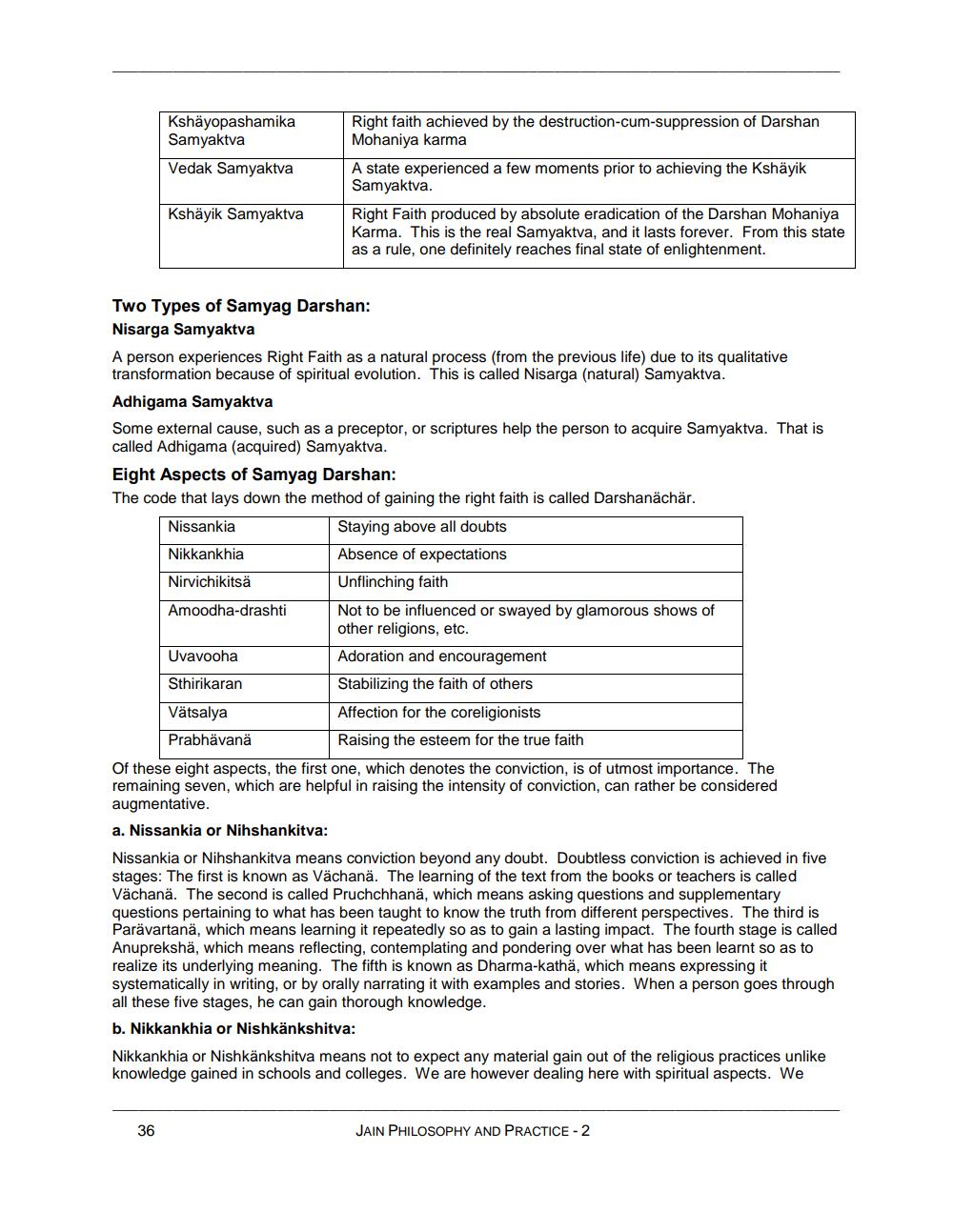________________
Kshäyopashamika Samyaktva
Vedak Samyaktva
Kshäyik Samyaktva
Right faith achieved by the destruction-cum-suppression of Darshan Mohaniya karma
Two Types of Samyag Darshan:
Nisarga Samyaktva
A state experienced a few moments prior to achieving the Kshäyik Samyaktva.
A person experiences Right Faith as a natural process (from the previous life) due to its qualitative transformation because of spiritual evolution. This is called Nisarga (natural) Samyaktva.
Right Faith produced by absolute eradication of the Darshan Mohaniya Karma. This is the real Samyaktva, and it lasts forever. From this state as a rule, one definitely reaches final state of enlightenment.
Adhigama Samyaktva
Some external cause, such as a preceptor, or scriptures help the person to acquire Samyaktva. That is called Adhigama (acquired) Samyaktva.
Uvavooha
Sthirikaran
36
Eight Aspects of Samyag Darshan:
The code that lays down the method of gaining the right faith is called Darshanächär.
Nissankia
Staying above all doubts
Nikkankhia
Absence of expectations
Nirvichikitsä
Unflinching faith
Amoodha-drashti
Not to be influenced or swayed by glamorous shows of other religions, etc.
Adoration and encouragement
Stabilizing the faith of others
Affection for the coreligionists
Raising the esteem for the true faith
Vätsalya
Prabhävanä
Of these eight aspects, the first one, which denotes the conviction, is of utmost importance. The remaining seven, which are helpful in raising the intensity of conviction, can rather be considered augmentative.
a. Nissankia or Nihshankitva:
Nissankia or Nihshankitva means conviction beyond any doubt. Doubtless conviction is achieved in five stages: The first is known as Vächanä. The learning of the text from the books or teachers is called Vächanä. The second is called Pruchchhanä, which means asking questions and supplementary questions pertaining to what has been taught to know the truth from different perspectives. The third is Parävartanä, which means learning it repeatedly so as to gain a lasting impact. The fourth stage is called Anuprekshä, which means reflecting, contemplating and pondering over what has been learnt so as to realize its underlying meaning. The fifth is known as Dharma-kathä, which means expressing it systematically in writing, or by orally narrating it with examples and stories. When a person goes through all these five stages, he can gain thorough knowledge.
b. Nikkankhia or Nishkänkshitva:
Nikkankhia or Nishkänkshitva means not to expect any material gain out of the religious practices unlike knowledge gained in schools and colleges. We are however dealing here with spiritual aspects. We
JAIN PHILOSOPHY AND PRACTICE - 2




